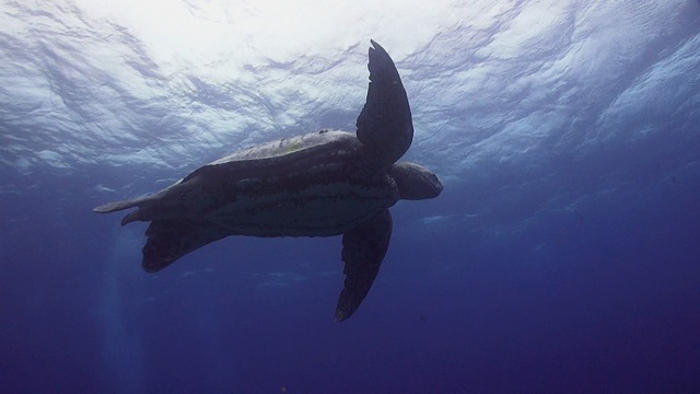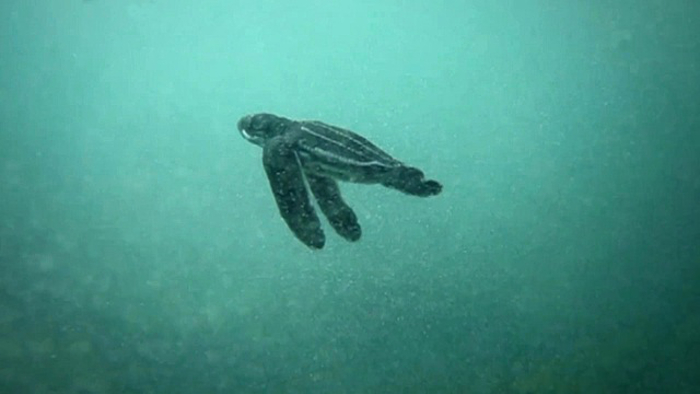
Seven species of sea turtles are roaming our world’s seas and oceans. Four of them regularly visit the east coast of Southern Africa: the hawksbill, loggerhead, green, and the species which is both the most impressive and elusive, the giant leatherback turtle.
All sea turtles undertake long, perilous journeys to return to the beaches where they hatched to lay their eggs. Leatherbacks – the largest of all living turtles – break all the distance records. They live in open water and can travel across the ocean in pursuit of the best jellyfish feeding grounds, which they prey on. The resultant round-trip to nesting grounds can be up to 6,000km.

To accomplish such journeys, leatherbacks have developed a hydrodynamic, teardrop-shaped body. Their carapace is covered with oily skin to further reduce drag, unlike other sea turtles with bony scutes or external plates on their carapace. This immense body can grow over two metres in length and weigh between 250 and 700 kg on average, although a weight of 900 kg has been recorded.
Leatherback turtles are propelled by the largest flippers of all sea turtles – the flippers can reach 2.5 metres in length. They allow the leatherback to achieve considerable speed needed to traverse long distances, which unfortunately no scuba diver can match. Sightings of these turtles underwater are few and far between, especially as these turtles do not favour coral reefs and only pass through to get to the beaches, where they nest and lay eggs.
It is fair to say that meeting one while scuba diving is rated among the rarest sightings of marine life. Even if you are lucky enough, it will most likely be a fleeting moment, as you do not stand a chance of catching up with a swimming leatherback.
You can, however, see them on one of the northeast coast beaches of South Africa, like Sodwana Bay and St. Lucia in Isimangaliso Wetland Park. During nesting season, which takes place in the summer months in South Africa, leatherbacks can be spotted, mostly at night, laying eggs in the beach sand across many kilometres of local beaches. Find your environmentally responsible turtle watch operator and meet one of the last living dinosaurs of our time.

Facts about leatherback turtles:
1. Leatherbacks feed almost exclusively on jellyfish. They often mistake plastic bags floating in the ocean for food, which can be fatal by blocking digestion tracks. Segregate and recycle your plastic waste to avoid contributing to this unnecessary threat.
2. They are the fastest-moving reptiles of all. Their average speed can reach 10km/hr with bursts up to 30km/hr.
3. They inhabit all subtropical and tropical waters and have been seen even in the waters of the Arctic. The open ocean is their main habitat; they only move closer to land during nesting season.
4. A female leatherback lays about 100 eggs in every clutch. The nest’s ambient temperature will determine the sex of hatchlings (baby turtles) – hotter nests will produce more females and cooler ones will be more male dominated.
5. Male leatherbacks will stay in the open water their whole lives, while females will periodically return to their nesting regions to lay eggs.
Watch the below video on leatherback turtles, part of my Creatures of the Sea series:
To comment on this story: Login (or sign up) to our app here - it's a troll-free safe place 🙂.![]()






